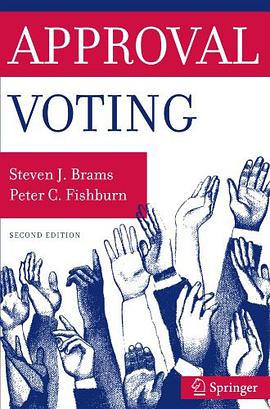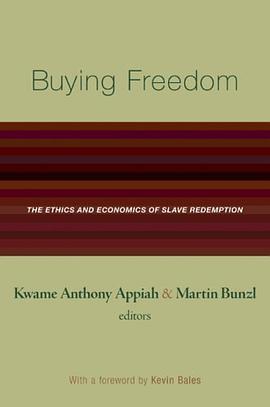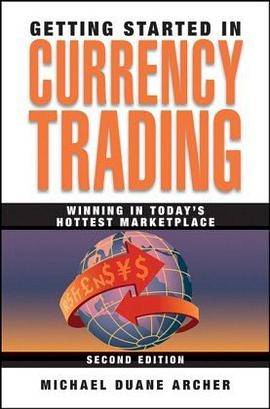

具体描述
Claims reserving is central to the insurance industry. Insurance liabilities depend on a number of different risk factors which need to be predicted accurately. This prediction of risk factors and outstanding loss liabilities is the core for pricing insurance products, determining the profitability of an insurance company and for considering the financial strength (solvency) of the company. Following several high-profile company insolvencies, regulatory requirements have moved towards a risk-adjusted basis which has lead to the Solvency II developments. The key focus in the new regime is that financial companies need to analyze adverse developments in their portfolios. Reserving actuaries now have to not only estimate reserves for the outstanding loss liabilities but also to quantify possible shortfalls in these reserves that may lead to potential losses. Such an analysis requires stochastic modeling of loss liability cash flows and it can only be done within a stochastic framework. Therefore stochastic loss liability modeling and quantifying prediction uncertainties has become standard under the new legal framework for the financial industry. This book covers all the mathematical theory and practical guidance needed in order to adhere to these stochastic techniques. Starting with the basic mathematical methods, working right through to the latest developments relevant for practical applications; readers will find out how to estimate total claims reserves while at the same time predicting errors and uncertainty are quantified. Accompanying datasets demonstrate all the techniques, which are easily implemented in a spreadsheet. A practical and essential guide, this book is a must-read in the light of the new solvency requirements for the whole insurance industry
作者简介
目录信息
Acknowledgement
1. Introduction and Notation
1.1 Claims process
1.1.1 Accounting principles and accident years
1.1.2 Inflation
1.2 Structural framework to the claims-reserving problem
1.2.1 Fundamental properties of the claims reserving process
1.2.2 Known and unknown claims
1.3 Outstanding loss liabilities, classical notation
1.4 General remarks
2 Basic Methods
2.1 Chain-ladder method (distribution-free)
2.2 Bornhuetter-Ferguson method
2.3 Number of IBNyR claims, Poisson model
2.4 Poisson derivation of the CL algorithm
3 Chain-Ladder Models
3.1 Mean square error of prediction
3.2 Chain-ladder method
3.2.1 Mack model (distribution-free CL model)
3.2.2 Conditional process variance
3.2.3 Estimation error for single accident years
3.2.4 Conditional MSEP, aggregated accident years
3.3 Bounds in the unconditional approach
3.3.1 Results and interpretation
3.3.2 Aggregation of accident years
3.3.3 Proof of Theorems 3.17, 3.18 and 3.20
3.4 Analysis of error terms in the CL method
3.4.1 Classical CL model
3.4.2 Enhanced CL model
3.4.3 Interpretation
3.4.4 CL estimator in the enhanced model
3.4.5 Conditional process and parameter prediction errors
3.4.6 CL factors and parameter estimation error
3.4.7 Parameter estimation
4 Bayesina Models
4.1 Benktander-Hovinen method and Cape-Cod model
4.1.1 Benktander-Hovinen method
4.1.2 Cape-Cod model
4.2 Credible claims reserving method
4.2.1 Mimimizing quadratic loss functions
4.2.2 Distributional examples to credible claims reserving
4.2.3 Log-normal/Log-normal model
4.3 Exact Bayesian models
4.3.1 Overdispersed Poisson model with gamma prior distribution
4.3.2 Exponential dispersion family with its associated conjugates
4.4 Markov chain Monte Carlo methods
4.5 Bühlmann-Straub credibility model
4.6 Multidimensional credibility models
4.6.1 Hachemeister regression model
4.6.2 Other credibility models
4.7 Kalman filter
5 Distributional Methods
5.1 Log-normal model for cumulative claims
5.1.1 Known variances
5.1.2 Unknown variances
5.2 Incremental claims
5.2.1 (Overdispersed) Poisson model
5.2.2 Negative-Binomial model
5.2.3 Log-normal model for incremental claims
5.2.4 Gamma model
5.2.5 Tweedie's compound Poisson model
6.2.6 Wright's model
6 Generalized Linear Models
6.1 Maximum likelihood estimators
6.2 Generalized linear models framework
6.3 Exponential dispersion family
6.4 Parameter estimation in the EDF
6.4.1 MLE for the EDF
6.4.2 Fisher's scoring method
6.4.3 Mean square error of prediction
6.5 Other GLM models
6.6 Bornhuetter-Ferguson method, revisited
6.6.1 MSEP in the BF method, single accident year
6.6.2 MSEP in the BF method, aggregated accident years
7 Bootstrap Methods
7.1 Introduction
7.1.1 Efron's non-parametric bootstrap
7.1.2 Parametric bootstrap
7.2 Log-normal model for cumulative sizes
7.3 Generalized linear models
7.4 Chain-ladder method
7.4.1 Approach 1: Unconditional estimation error
7.4.2 Approach 3: Conditional estimation error
7.5 Mathematical thoughts about boootstrapping methods
7.6 Synchronous bootstrapping of seemingly unrelated regressions
8 Multivariate Reserving Methods
8.1 General multivariate framework
8.2 Multivariate chain-ladder method
8.2.1 Multivariate CL model
8.2.2 Conditional process variance
8.2.3 Conditional estimation error for single accident years
8.2.4 Conditional MSEP, aggregated accident years
8.2.5 Parameter estimation
8.3 Multivariate additive loss reserving method
8.3.1 Multivariate additive loss reserving model
8.3.2 Conditional process variance
8.3.3 Conditional estimation error for single accident years
8.3.4 Conditional MSEP, aggregated years
8.3.5 Parameter estimation
8.4 Combined Multivariate CL and ALR method
8.4.1 Combined CL and ALR method: the model
8.4.2 Conditional cross process variance
8.4.3 Conditional cross estimation error for single accident years
8.4.4 Conditional MSEP, aggregated accident years
8.4.5 Parameter estimation
9 Selected Topics I: Chain-Ladder Methods
9.1 Munich chain-ladder
9.1.1 The Munich chian-ladder model
9.1.2 Credibility approach to the MCL method
9.1.3 MCL Parameter estimation
9.2 CL Reserving: A Bayesian inference model
9.2.1 Prediction of the ultimate claim
9.2.2 Likelihood function and posterior distribution
9.2.3 Mean square error of prediction
9.2.4 Credibility chain-ladder
9.2.5 Examples
9.2.6 Markov chain Monte Carlo methods
10 Selected Topics II: Individual Claims Development Processes
10.1 Modelling claims development processes for individual claims
10.1.1 Modelling framework
10.1.2 Claims reserving categories
10.2 Separating IBNer and IBNyR claims
11 Statistical Diagnostics
11.1 Testing age-to-age factors
11.1.1 Model choice
11.1.2 Age-to-age factors
11.1.3 Homogeneity in time and distributional assumptions
11.1.4 Correlations
11.1.5 Diagonal effects
11.2 Non-parametric smoothing
Appendix A: Distributions
A.1 Discrete distributions
A.1.1 Binomial distribution
A.1.2 Poisosn distribution
A.1.3 Negative-Binomial distribution
A.2 Continuous distributions
A.2.1 Uniform distribution
A.2.2 Normal distribution
A.2.3 Log-normal distribution
A.2.4 Gamma distribution
A.2.5 Beta distribution
Bibliography
Index
· · · · · · (收起)
读后感
评分
评分
评分
评分
用户评价
非常完备、经典的非寿险精算专业书!
评分非常完备、经典的非寿险精算专业书!
评分非常完备、经典的非寿险精算专业书!
评分非常完备、经典的非寿险精算专业书!
评分非常完备、经典的非寿险精算专业书!
相关图书
本站所有内容均为互联网搜索引擎提供的公开搜索信息,本站不存储任何数据与内容,任何内容与数据均与本站无关,如有需要请联系相关搜索引擎包括但不限于百度,google,bing,sogou 等
© 2025 book.quotespace.org All Rights Reserved. 小美书屋 版权所有




















